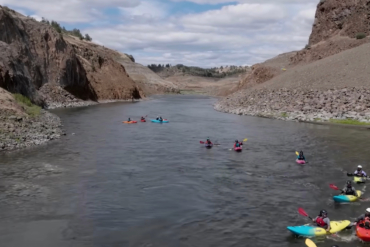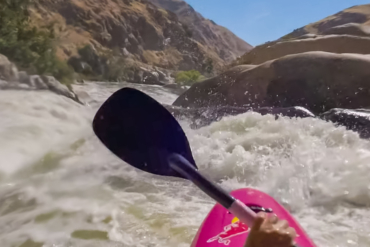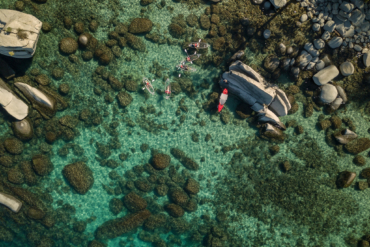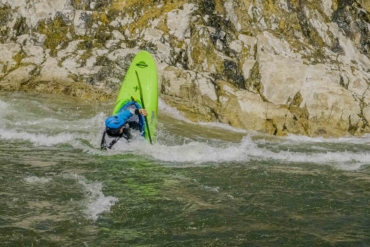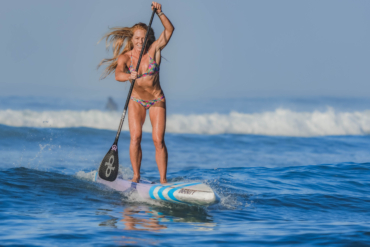Apart from a fleeting blaze of neon in the ’80s, wetsuits have been largely monochromatic — most surfers just stick to black. In the same vein, wetsuit manufacturers have taken a similar approach to production, sticking with neoprene, a textile first invented by DuPont in 1931.
While neoprene continues to dominate the market, more and more wetsuit suppliers are adopting sustainable stand-ins to the petroleum-based standard.
At the forefront of that divergence from the pack, unsurprisingly, has been Patagonia. Yvon Chouinard’s company started looking into sustainable substitutes to neoprene long before it became obligatory for brands to address environmental impact.
Patagonia Teams up With Yulex

In 2008, when the brand first cross-stepped into the wetsuit market, Patagonia partnered with Yulex, a bio-based materials innovator. Together, they developed clean natural rubber first from the guayule plant, then the hevea tree, the latter of which became the foundation of Patagonia’s current lineup of Yulex suits — the gold standard in sustainable wetsuit production.
The material eventually enabled Patagonia to commit fully to sustainability in 2016, becoming the first surf company to nix neoprene altogether. Ever since, Patagonia and Yulex have been improving the recipe. After we tested a couple of renditions, it’s safe to say Patagonia’s on its best batch of wetsuits yet.
We chatted with Hub Hubbard, Patagonia’s Ventura-based wetsuit developer, who can testify to why it’s been a long road to get Yulex to where it is now.
Where It Started
At first, Yulex was just a pipe dream.
The materials manufacturer approached a handful of surf brands with its futuristic, sustainable rubber, and while most brands applauded the idea, they couldn’t be bothered to invest what it would take to make the concept scalable. One, however, gave them a chance: Patagonia.

“I actually got to take out one of the very first Yulex wetsuits ever made,” recalled Hubbard, shortly after he joined Patagonia in 2012. “It was incredible. I’ve told the story many times — but I ran down to Emma Woods with this suit. It was one foot, and onshore, I was the only one out, and it was this moment. I was like, ‘Oh my God. This is the best suit in the world.’ Which it was not, by any means,” he laughed.
Since that fateful surf proved the idea had sea legs, there were inevitable growing pains as Patagonia brought the new tech to market. Yulex, it turned out, can’t be treated the same as neoprene. It was a completely new material that required a different lexicon of construction techniques. Subsequently, early production models were on the stiffer side.
Patagonia learned as it went, consistently tweaking the design and working with Yulex to improve the material. Like a well-earned wave after a wearisome paddle-out, the hard work’s been well worth it. “Over the last six years, the evolution has been incredible. What we have now is, as far as I’m concerned, equal to any neoprene product that’s out there,” said Hubbard.
Where Yulex Is Now

After such a painstaking and pricey road to market, it might surprise you to learn that Yulex isn’t exclusive to Patagonia suits.
While many companies might choose to keep such technology secret, Patagonia intentionally shared its findings with competitors. “Patagonia’s such a tiny percent of the wetsuit market as a whole. We knew from the beginning that we were not going to make a difference if we [kept] this exclusively for ourselves,” Hubbard said. “So from the get-go, we always intended to make it an open market technology. We fully help support any other brand that wants to adopt it.”
And in recent years, the tech is catching on, with surf brands like Billabong, Finisterre, and Need Essentials incorporating the fabric.
And as Hubbard says, the more the merrier.



